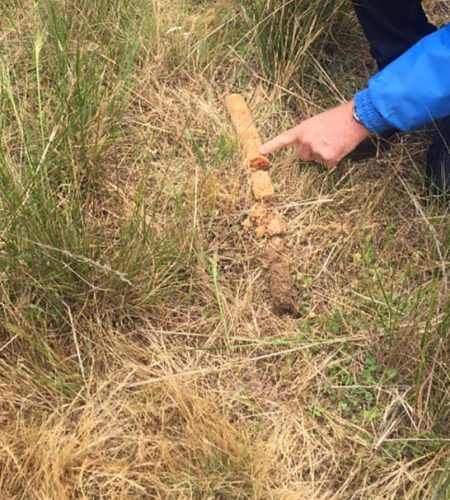This fact sheet references a case study titled ‘Selecting and Assessing Biological Amendments’, published by South West NRM with support from University of Western Australia Emeritus Professor Lyn Abbott.
With the rising price of fertilisers there has been an increased interest in alternative sources of nutrients and products to either “fix” or “release” nutrients or increase nutrient use efficiency.
A lot of information about how to manage soil biology is coming from the marketplace, which now offers a wide range of biological amendments aimed at improving biological function. However, with many amendments not widely tested or used, it is difficult for farmers to decide which product, if any, will help in their situation.
Biological amendments usually consist of living organisms (such as beneficial bacteria or fungi), or their by-products, and organic matter. These amendments interact with soil and plants to improve nutrient uptake, disease resistance and overall soil health.
Types Of Biological Amendments
- Microbial inoculants contain beneficial microorganisms like bacteria, fungi and algae that may enhance nutrient availability and promote plant growth.
- Biostimulants are derived from organic sources like seaweed products and humic substances, to improve nutrient uptake, and may suppress disease and pests.
- Compost and manure are organic materials rich in nutrients and microorganisms, that may improve soil structure, moisture retention, and nutrient cycling.
- Plant-based amendments like cover crops and crop residues contribute organic matter to the soil, to enhance soil structure and biodiversity.
Selecting The Right Amendment
- Conduct soil tests to identify soil characteristics like nutrient deficiencies and pH levels, so you can select amendments tailored to your soil’s needs. The type and abundance of living organisms found in the soil will depend on soil characteristics such as pH and temperature. These characteristics may vary during the year, so aim to soil test at the same time every year.
- Consider crop requirements by choosing amendments that align with the nutritional needs of your crops and address specific plant and soil requirements.
- Match legume inoculants to the right legume group. Refer to soil testing results to match soil pH, crop and inoculum requirements for optimum nitrogen fixation. Check GRDC’s inoculating legumes guide.
Assessing Amendment Quality
- Check product labels for information on microbial content, nutrient composition, and application rates.
- Look for certifications indicating quality standards and adherence to organic practices.
- Seek feedback from fellow farmers or agricultural experts to assess the effectiveness and reliability of different amendments.
- Conduct small-scale trials on your farm to evaluate the performance of selected amendments before full-scale implementation. Always leave a few untreated strips to compare with the treated areas over varying terrain.
Application And Monitoring
- Follow recommended application rates and methods provided by manufacturers to ensure effective results.
- Regularly monitor soil health indicators such as nutrient levels, microbial activity, and plant growth to assess the impact of biological amendments. Be sure to monitor the treated and untreated areas to determine the impact of the amendments applied.
- Be prepared to adjust your amendment strategies based on observed outcomes and changing soil conditions over time.

